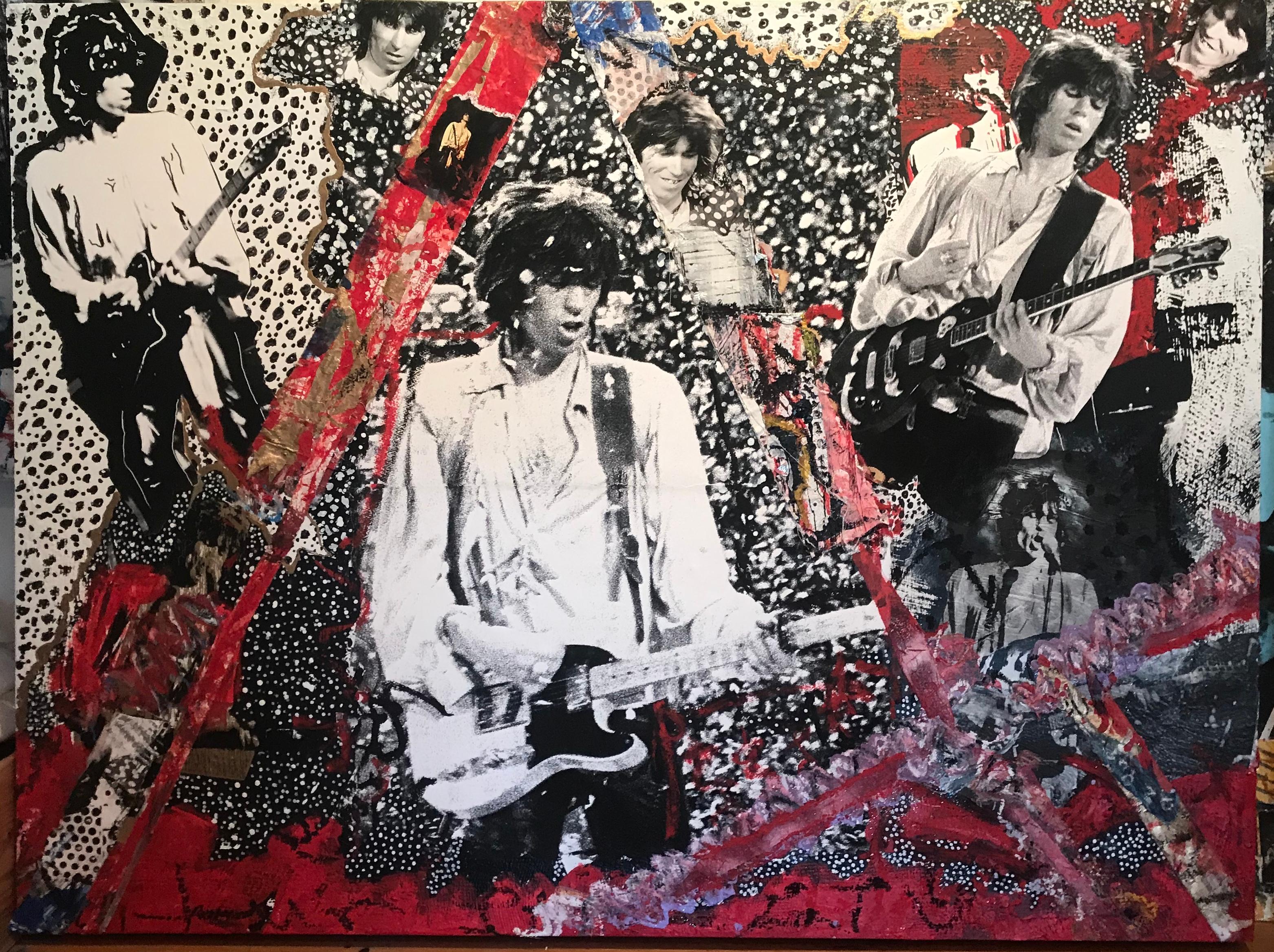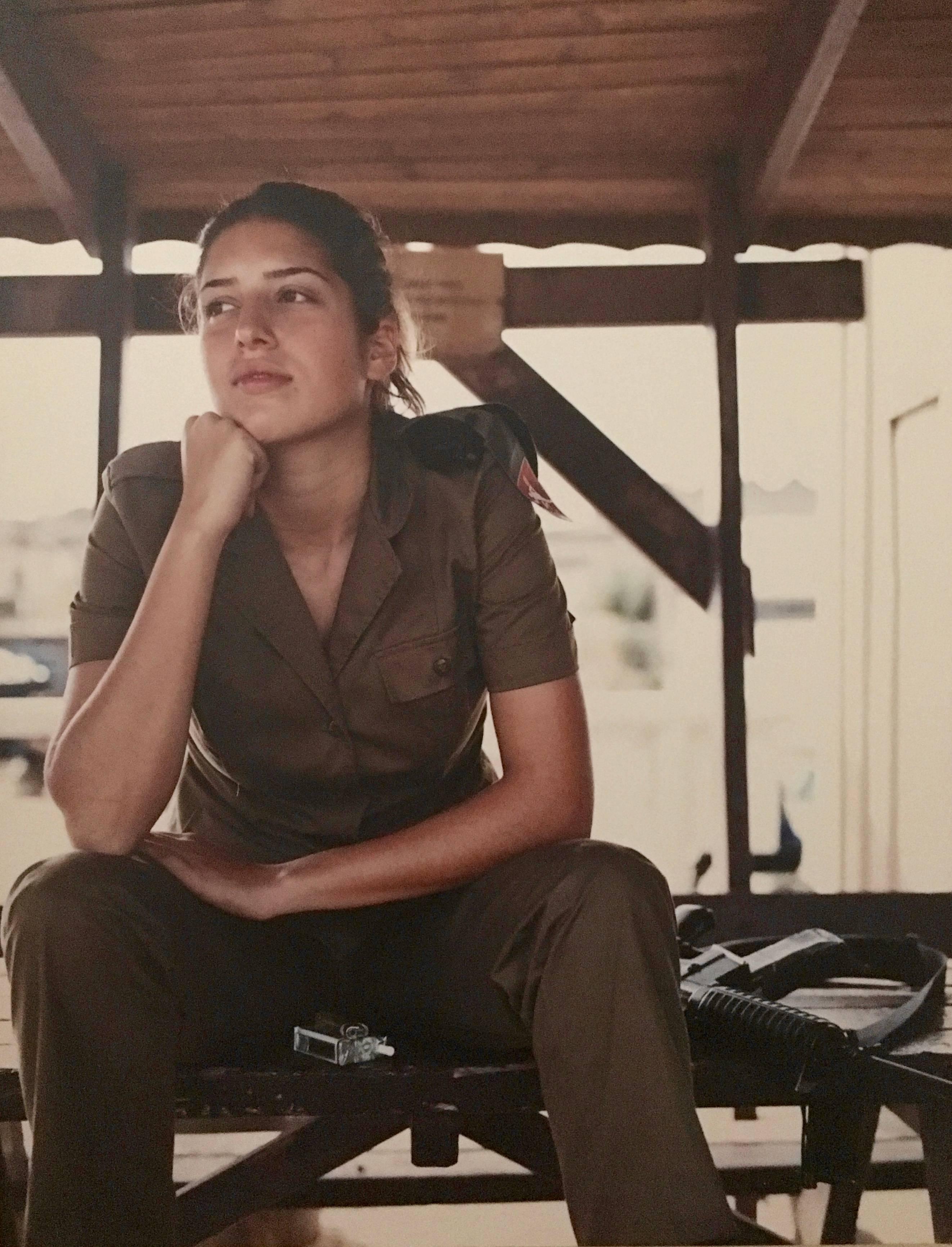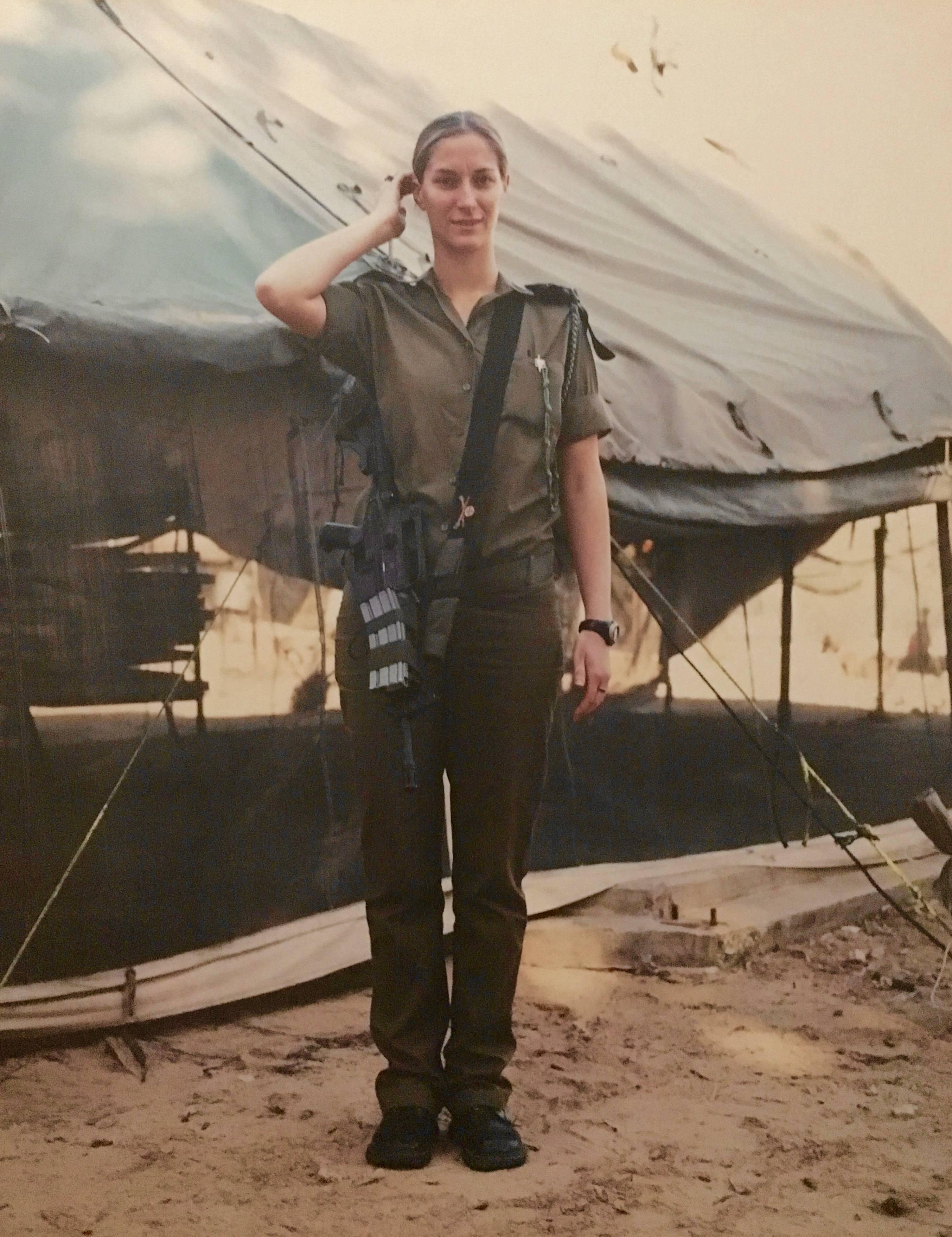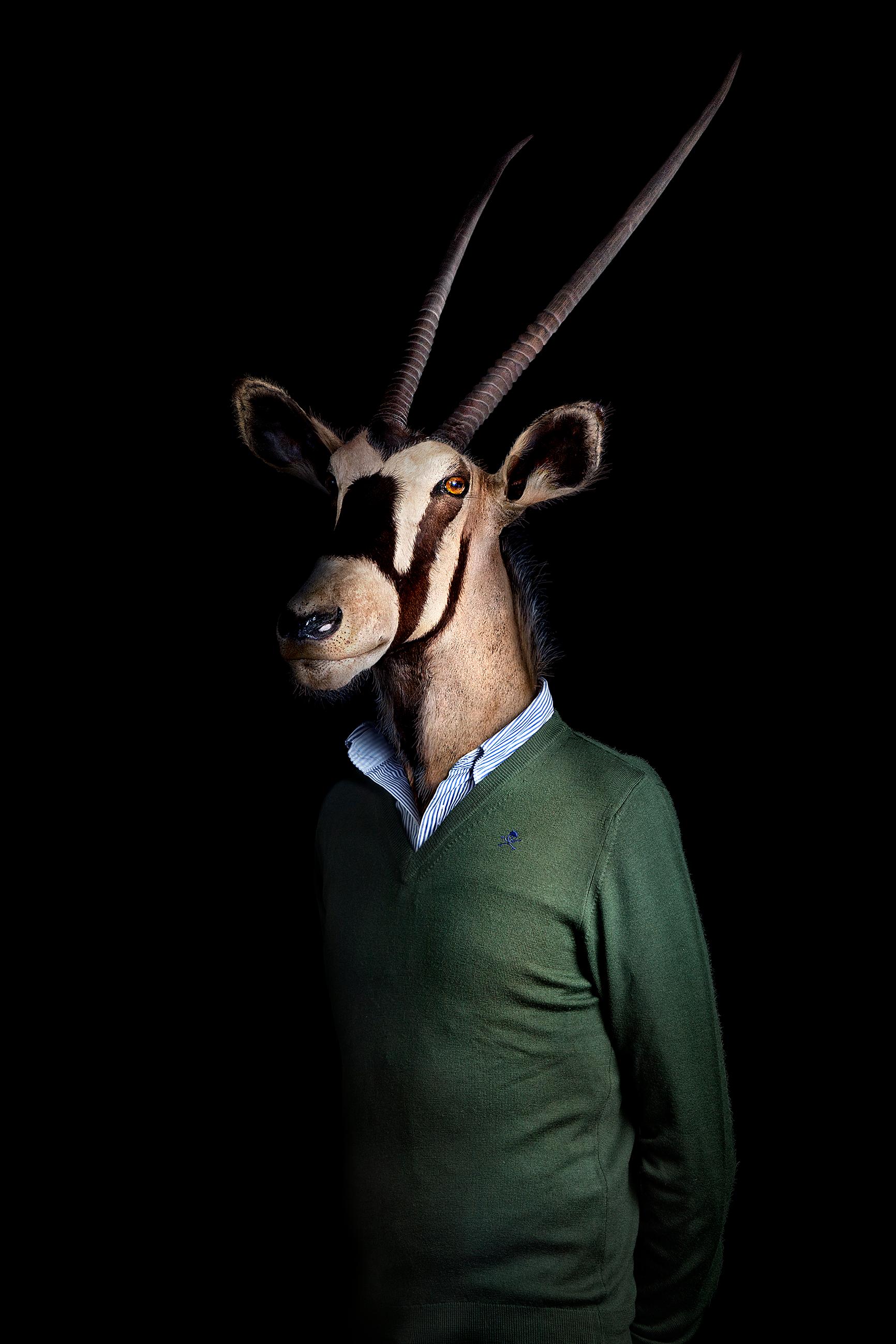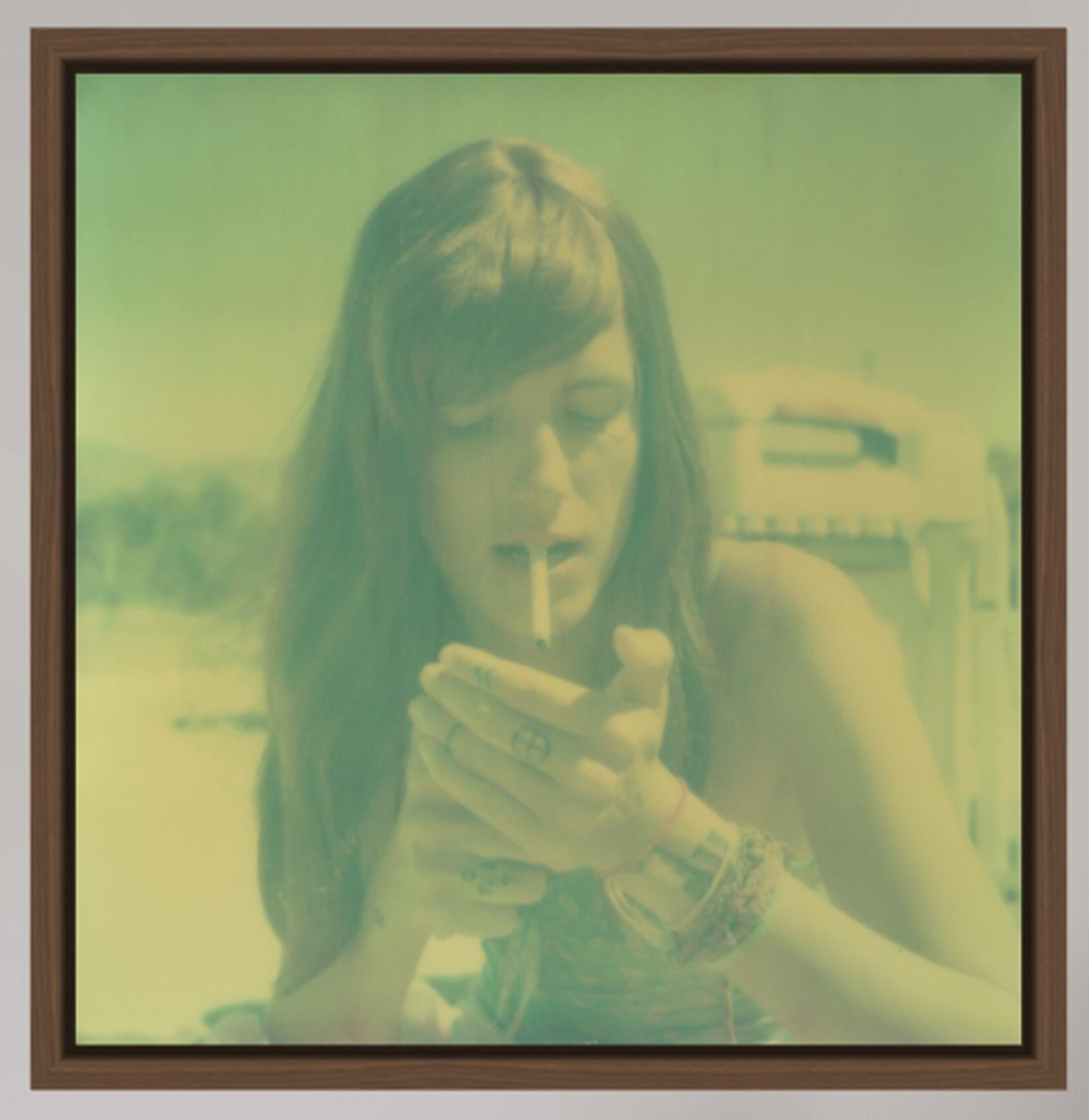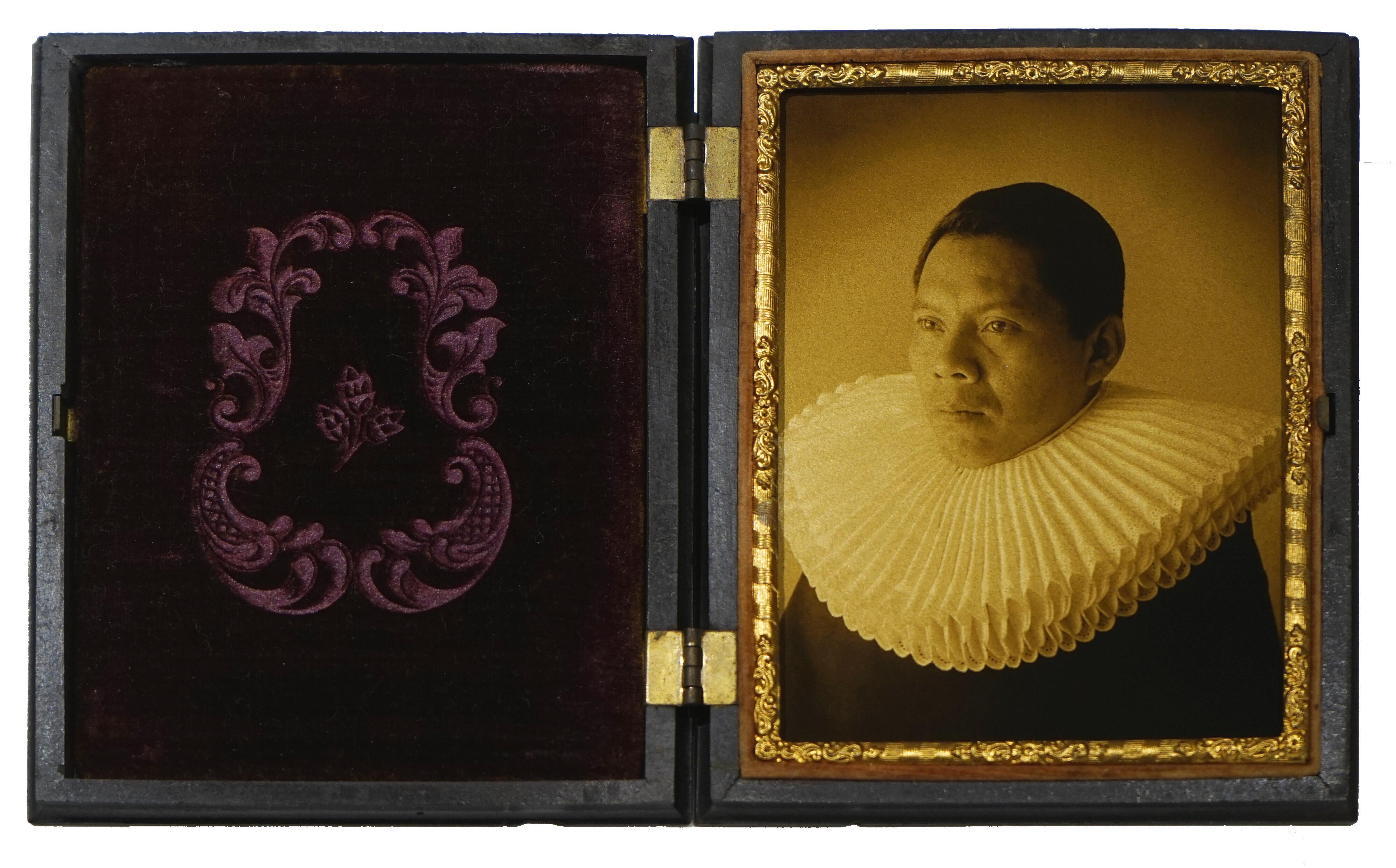Items Similar to WOMEN OF THE IDF Large color Photograph LITAL
Want more images or videos?
Request additional images or videos from the seller
1 of 8
Ashkan SahihiWOMEN OF THE IDF Large color Photograph LITAL
About the Item
"Women of the IDF" Large Exhibition color Photograph
30 x 40 inches, mounted on masonite and laminated.
Edition of 4 + 2 artists proof. minor dings and bumps to edges Born in Tehran, Iran, Ashkan Sahihi moved with his family to West Germany at the age of seven. Although he began taking photographs as a teenager, Sahihi traces the beginning of his professional trajectory to New York in 1987, a thriving “pop culture metropolis” where he could do the kind of photography work that he wanted to do, exploring the underbelly of the society around him. Taking assignments from German publications such as the Süddeutsche Zeitung Magazine, Der Spiegel, Dummy and GEO, he photographed subjects like prisoners on death row, players in the hip-hop scene, and the downtown art scene of New York. Neither black nor white, an insider among outsiders, he found himself able to navigate spaces and dynamics that others might have had difficulty entering. He considered this both a privilege and an obligation – to visit these places and tell these stories. His success led to commissions from American publications as well, including the New York Times Magazine, the New Yorker, Rolling Stone, and Vogue.
Put off by the limitations of photojournalism (the expectation that he would illustrate the writer’s perspective rather than author a narrative of his own), Sahihi began to embark on independent, highly compact conceptual series. His main goal in these series has been to drive forward public discourse on topics he believes have not provoked enough or the right kind of discussion: drugs, gender in the media, women in the military, etc. His portraits draw on a familiar visual language – often seated subjects before a neutral backdrop – but push the viewer to feel and think about entirely new things. Although he constantly challenges the comfort level of both the viewer and the subject, Sahihi never removes himself from the line of fire; all of his work requires the artist to immerse himself in uncomfortable situations and challenge his own emotional fortitude.
Photographic Series
In the “Face Series”, latex-gloved hands manipulate the subjects’ features, stretching, pushing, squeezing, pinching at the whim of external direction – from the artist? The customer? The public? The “Hypnosis Series” comprises 8 portraits of hypnotized subjects each experiencing a single emotion, e.g. helplessness, withholding/anger, or regret. In a society that rewards the suppression of such naked emotion, the purity of these depictions is arresting.
In 2006, Sahihi photographed himself in the homes and with the families of six ex-girlfriends and one ex-wife, imposing himself more or less awkwardly on the constellations that emerged after he had exited their lives (“Exes Series”).
For Sahihi’s most well-known work, the “Drug Series,” he convinced 11 non–drug users to consume a particular drug, then took their portraits over the course of their trips. The series was born out of Sahihi’s frustration with the hypocrisy of the political conversation about drugs in the United States. “By attempting to present an objective image of drug use, the artist addresses the cultural politics that allow our society to simultaneously glamorize the ‘drug look’ in fashion magazines and the entertainment industry and meanwhile turn a blind eye to the complicated, and vast, problem of drug abuse.” Sahihi has exhibited this series at MoMA PS1 New York in 2001, in Dresden in 2008, and alongside his installation “100 Million in Ready Cash."
Sahihi’s dense explorations through small photographic series include “Women of the IDF," portraits of female Israeli soldiers; “Camp X-Ray Guantanamo Bay,” black-and-white landscapes of barbed wire and watch towers; the “Cum Series”; the “Armpit Series”; and the “Kiss Series," in which the artist photographed himself kissing 18 women and men of various ethnicities. Sahihi’s photographs of the Occupy Wall Street movement constitute his latest series of this kind.
In recent years, Sahihi has lived and worked in New York, Istanbul, the Middle East, and London, producing bodies of work in each place that attempt to engage the political discourse he deems lacking in substance.
Exhibitions
Andrea Rosen Gallery, NY, USA (2000)
Basel Art Fair 31, Switzerland (2000)
MoMA PS1, NY, USA (solo and group shows, 2001 and 2006)
John Connelly Presents, NY, USA
Akureyri Museum, Iceland
Akademie der Künste, Berlin, Germany
Axel Raben Gallery, NY, USA
Macro, Rome, Italy
Schloss Morsbroich, Leverkusen, Germany
Städtische Galerie, Dresden, Germany
Galerie am Körnerpark, Berlin, Germany (2015)
Galerie Springer, Berlin, Germany (2015)
Kehrer Galerie, Berlin, Germany (2016)
- Creator:Ashkan Sahihi (1963, Iranian)
- Dimensions:Height: 40 in (101.6 cm)Width: 31 in (78.74 cm)Depth: 1 in (2.54 cm)
- Medium:
- Period:
- Condition:minor bumps and dings to edges.
- Gallery Location:Surfside, FL
- Reference Number:1stDibs: LU38211256702
About the Seller
4.9
Platinum Seller
These expertly vetted sellers are 1stDibs' most experienced sellers and are rated highest by our customers.
Established in 1995
1stDibs seller since 2014
1,565 sales on 1stDibs
Typical response time: 1 hour
- ShippingRetrieving quote...Ships From: Surfside, FL
- Return PolicyA return for this item may be initiated within 3 days of delivery.
More From This SellerView All
- Large Color Photograph "Women of the IDF" Ashkan SahihiBy Ashkan SahihiLocated in Surfside, FL"Women of the IDF" Large Exhibition color Photograph 30 x 40 inches, mounted on masonite and laminated. Edition of 4 + 2 artists proof. minor dings and bumps to edges Born in Tehran, Iran, Ashkan Sahihi moved with his family to West Germany at the age of seven. Although he began taking photographs as a teenager, Sahihi traces the beginning of his professional trajectory to New York in 1987, a thriving “pop culture metropolis” where he could do the kind of photography work that he wanted to do, exploring the underbelly of the society around him. Taking assignments from German publications such as the Süddeutsche Zeitung Magazine, Der Spiegel, Dummy and GEO, he photographed subjects like prisoners on death row, players in the hip-hop scene, and the downtown art scene of New York. Neither black nor white, an insider among outsiders, he found himself able to navigate spaces and dynamics that others might have had difficulty entering. He considered this both a privilege and an obligation – to visit these places and tell these stories. His success led to commissions from American publications as well, including the New York Times Magazine, the New Yorker, Rolling Stone, and Vogue. Put off by the limitations of photojournalism (the expectation that he would illustrate the writer’s perspective rather than author a narrative of his own), Sahihi began to embark on independent, highly compact conceptual series. His main goal in these series has been to drive forward public discourse on topics he believes have not provoked enough or the right kind of discussion: drugs, gender in the media, women in the military, etc. His portraits draw on a familiar visual language – often seated subjects before a neutral backdrop – but push the viewer to feel and think about entirely new things. Although he constantly challenges the comfort level of both the viewer and the subject, Sahihi never removes himself from the line of fire; all of his work requires the artist to immerse himself in uncomfortable situations and challenge his own emotional fortitude. Photographic Series In the “Face Series”, latex-gloved hands manipulate the subjects’ features, stretching, pushing, squeezing, pinching at the whim of external direction – from the artist? The customer? The public? The “Hypnosis Series” comprises 8 portraits of hypnotized subjects each experiencing a single emotion, e.g. helplessness, withholding/anger, or regret. In a society that rewards the suppression of such naked emotion, the purity of these depictions is arresting. In 2006, Sahihi photographed himself in the homes and with the families of six ex-girlfriends and one ex-wife, imposing himself more or less awkwardly on the constellations that emerged after he had exited their lives (“Exes Series”). For Sahihi’s most well-known work, the “Drug Series,” he convinced 11 non–drug users to consume a particular drug, then took their portraits over the course of their trips. The series was born out of Sahihi’s frustration with the hypocrisy of the political conversation about drugs in the United States. “By attempting to present an objective image of drug use, the artist addresses the cultural politics that allow our society to simultaneously glamorize the ‘drug look’ in fashion magazines and the entertainment industry and meanwhile turn a blind eye to the complicated, and vast, problem of drug abuse.” Sahihi has exhibited this series at MoMA PS1 New York in 2001, in Dresden in 2008, and alongside his installation “100 Million in Ready Cash." Sahihi’s dense explorations through small photographic series include “Women of the IDF," portraits of female Israeli soldiers...Category
Early 2000s Portrait Photography
MaterialsLaminate, Masonite
- WOMEN OF THE ISRAEL DEFENSE FORCES Large Photo NETABy Ashkan SahihiLocated in Surfside, FL"Women of the IDF" Large Exhibition color Photograph 30 x 40 inches, mounted on masonite and laminated. Edition of 4 + 2 artists proof. minor dings and bumps to edges Born in Tehran, Iran, Ashkan Sahihi moved with his family to West Germany at the age of seven. Although he began taking photographs as a teenager, Sahihi traces the beginning of his professional trajectory to New York in 1987, a thriving “pop culture metropolis” where he could do the kind of photography work that he wanted to do, exploring the underbelly of the society around him. Taking assignments from German publications such as the Süddeutsche Zeitung Magazine, Der Spiegel, Dummy and GEO, he photographed subjects like prisoners on death row, players in the hip-hop scene, and the downtown art scene of New York. Neither black nor white, an insider among outsiders, he found himself able to navigate spaces and dynamics that others might have had difficulty entering. He considered this both a privilege and an obligation – to visit these places and tell these stories. His success led to commissions from American publications as well, including the New York Times Magazine, the New Yorker, Rolling Stone, and Vogue. Put off by the limitations of photojournalism (the expectation that he would illustrate the writer’s perspective rather than author a narrative of his own), Sahihi began to embark on independent, highly compact conceptual series. His main goal in these series has been to drive forward public discourse on topics he believes have not provoked enough or the right kind of discussion: drugs, gender in the media, women in the military, etc. His portraits draw on a familiar visual language – often seated subjects before a neutral backdrop – but push the viewer to feel and think about entirely new things. Although he constantly challenges the comfort level of both the viewer and the subject, Sahihi never removes himself from the line of fire; all of his work requires the artist to immerse himself in uncomfortable situations and challenge his own emotional fortitude. Photographic Series In the “Face Series”, latex-gloved hands manipulate the subjects’ features, stretching, pushing, squeezing, pinching at the whim of external direction – from the artist? The customer? The public? The “Hypnosis Series” comprises 8 portraits of hypnotized subjects each experiencing a single emotion, e.g. helplessness, withholding/anger, or regret. In a society that rewards the suppression of such naked emotion, the purity of these depictions is arresting. In 2006, Sahihi photographed himself in the homes and with the families of six ex-girlfriends and one ex-wife, imposing himself more or less awkwardly on the constellations that emerged after he had exited their lives (“Exes Series”). For Sahihi’s most well-known work, the “Drug Series,” he convinced 11 non–drug users to consume a particular drug, then took their portraits over the course of their trips. The series was born out of Sahihi’s frustration with the hypocrisy of the political conversation about drugs in the United States. “By attempting to present an objective image of drug use, the artist addresses the cultural politics that allow our society to simultaneously glamorize the ‘drug look’ in fashion magazines and the entertainment industry and meanwhile turn a blind eye to the complicated, and vast, problem of drug abuse.” Sahihi has exhibited this series at MoMA PS1 New York in 2001, in Dresden in 2008, and alongside his installation “100 Million in Ready Cash." Sahihi’s dense explorations through small photographic series include “Women of the IDF," portraits of female Israeli soldiers...Category
Early 2000s Portrait Photography
MaterialsMasonite
- Vintage Silver Gelatin Photograph Print, Girls on a Beach Photo, Two Man ShowLocated in Surfside, FLRichard Lebowitz, b. 1937, American, (RISD Faculty 1964-1995, Photography; Professor Emeritus) Tom Young, b. 1951, American, (RISD MFA 1977, Photography) TIT...Category
1980s American Modern Black and White Photography
MaterialsPhotographic Paper, Silver Gelatin
- Vintage Silver Gelatin Magnum Press Photo Eve Arnold Marilyn Monroe PhotographBy Eve ArnoldLocated in Surfside, FLMarilyn Monroe Vintage press photo. Photographer Eve Arnold for Magnum Photos. 1962 printed later. (I believe in the early 80's) Eve Arnold, OBE...Category
1960s American Modern Black and White Photography
MaterialsSilver Gelatin
- NYC Cabbie and Fare Vintage Silver Gelatin Photo Black White Street PhotographBy Ryan WeidemanLocated in Surfside, FL14" x 18" sight size. 24.5 x 28 mat size. Ryan Weideman NYC taxi cab driver street photography (the good old fashioned days of yellow cabs pre Uber and Lyft). Ryan Weideman graduated with an MFA from the California College of Arts & Crafts, In 1980 he moved to New York to pursue street photography. Influenced by the other photographers of the period including Lee Friedlander and Mark Cohen...Category
1990s American Realist Black and White Photography
MaterialsSilver Gelatin
- Rare Vintage Color C Print Photograph African Maasai Warrior Chromogenic PhotoBy Carol BeckwithLocated in Surfside, FLCarol Beckwith, (American, b. 1945), Maasai Portrait Chromogenic print on paper, from Beckwith's book "Maasai" (1980), Hand signed in pencil, dated and titled with name of sitter in margins, 19" x 16" Sheet. Carol Beckwith (1945-) is an American photographer, author, and artist known for her photojournalism documenting the indigenous tribal cultures of Africa, most notably in partnership with the Australian photographer Angela Fisher. Between them, Beckwith and Fisher have published 14 books, and have had their photos appear in National Geographic, Natural History, African Arts, The Observer Magazine, Time, Life, Vogue, Marie Claire and Elle. They continue to exhibit and lecture at galleries and museums worldwide, including The American Museum of Natural History and The Explorers Club in New York City, The Smithsonian Institution in Washington, DC, and the Royal Geographical Society in London. They have also collaborated on four films about African traditions. Together they have received numerous accolades, including the United Nations Award for Excellence, the Royal Geographical Society's Cherry Kearton Medal, two Anisfield-Wolf Book Awards, The Explorers Club Lowell Thomas Award, and the WINGS WorldQuest Lifetime Achievement Award. Carol Beckwith was born in Boston, Massachusetts, where she went on to attend both the School of the Museum of Fine Arts, Boston and Goucher College in Maryland. After obtaining her degree in Painting and Photography she won a traveling fellowship from the Boston Museum, which let her travel to other countries for the first time. She spent seven months in Japan, living in a Zen temple and studying calligraphy painting. She continued to travel through Southeast Asia and New Guinea, where she witnessed a "sing-sing", a gathering of 90,000 Highland warriors, in Mount Hagen, and paddled up Chambri Lakes in a canoe, an experience she called "one of the most wonderful, and in a way formative, experiences in my life." Her first trip to Africa was in 1973, when she was invited to spend Christmas with a friend in Kenya. Beckwith bought a 45-day roundtrip ticket and ended up staying eight months. There she encountered the Maasai people who invited her to witness a female circumcision ceremony. Astonished by the ritual, she then determined to spend more time with the Maasai. Beckwith studied photography in college but had initially intended to become a painter. It was during her travels through New Guinea that she realized the advantages of photography, saying that "there was such a vast amount of exciting material that I began to photograph instead, approaching photography with the eye of a painter in terms of light, color, composition. I wanted the images to be multi layered experiences in a way that a painting is. . . [Photography] seemed to be a more suitable medium for the pace of travel." Beckwith's first major collaboration was with Tepilit Ole Saitoti, an anthropologist and former Maasai warrior...Category
1970s Contemporary Color Photography
MaterialsPhotographic Paper, C Print
You May Also Like
- Keith Snow StormBy Steve JoesterLocated in New York, NYMixed Media on wood featuring the infamous Keith Richards. Photographed by Joester. About the Artist: Steve Joester is a British-born Rock & Roll photographer and mixed media a...Category
2010s Contemporary Figurative Paintings
MaterialsMixed Media, Photographic Film, Masonite
- Second Skin Nº 23By Miguel VallinasLocated in Madrid, ESSecond Skin is the fist serie of Miguel Vallinas' surreal images that reconsider the human form. Second Skin explores the concept of identity and personal ...Category
2010s Contemporary Portrait Photography
MaterialsWood
- Done Crying (The Girl behind the White Picket Fence)By Stefanie SchneiderLocated in Morongo Valley, CADone Crying (The Girl Behind the White Picket Fence) - 2013 Edition 1/10, 48,7 x 50 cm (External dimensions: 53,1 x 54,4 cm) Archival C-Print, based on the Polaroid, mounted on Alu-...Category
2010s Contemporary Color Photography
MaterialsPhotographic Paper, Wood, Archival Paper, C Print, Color, Polaroid
- Bodyguard #8By Luis Gonzalez PalmaLocated in Phoenix, AZLuis Gonzalez Palma Bodyguard #8, 2010 Original Goldtone photograph, vintage daguerreotype case 5" x 4" x .75" closed Print size: 4.25" 3.25" Edition 6/6 Luis González Palma’s multi...Category
2010s Contemporary Figurative Photography
MaterialsFabric, Wood, Photographic Film
- Bodyguard #3By Luis Gonzalez PalmaLocated in Phoenix, AZLuis Gonzalez Palma Bodyguard #3, 2010 Original Goldtone photograph, vintage daguerreotype case 4 3/4" x 3 3/4" x 7/8" closed Print size: 4.25" x 3.25" Luis González Palma’s multifa...Category
2010s Contemporary Figurative Photography
MaterialsFabric, Wood, Photographic Film
- Bodyguard #2By Luis Gonzalez PalmaLocated in Phoenix, AZLuis Gonzalez Palma Bodyguard #2, 2010 Original Goldtone photograph, vintage daguerreotype case 4 5/8" x 3 5/8" x 3/4" closed Print Size: 4.25' x 3.25" Edition 6/6 Luis González Pal...Category
2010s Contemporary Figurative Photography
MaterialsFabric, Wood, Photographic Film
